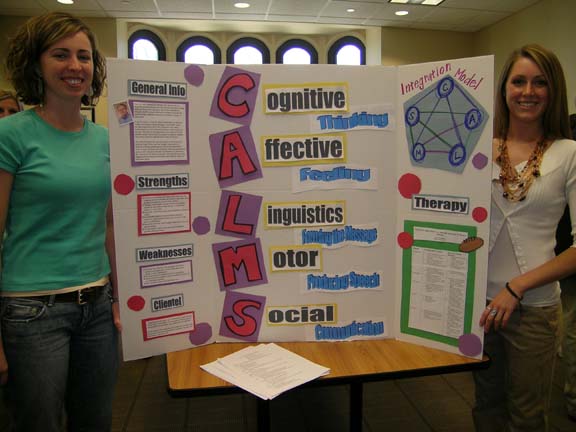CALMS Method of Assessment/Treatment
By Mary George and Megan McHugh

Cognitive-(thinking)
Affective- (feeling)
Linguistic-(forming the message)
Motor- (producing speech)
Social-(normal communication)
Cognitive:
- Child’s knowledge, understanding and awareness of stuttering
- Thoughts of identity as a person who stutters and how others view them
Therapy Ideas:
- Talk about talking
- Increase Knowledge of stuttering
- Understand Mechanisms of Speech
- Increase Self-Monitoring
- Change Negative Thinking
- Develop Question of the Week
- Journal
Affective:
- Feelings and emotions regarding stuttering
- Response to teasing, other people’s reactions, and avoidance of stuttering
- Self-image
Therapy Ideas:
- Playing with Stuttering
- Teach others how to stutter
- Use objects to represent stuttering
Linguistic:
- Level of fluency and how it affects overall language ability, articulation and phonological ability
Therapy Ideas:
- Select topic or theme
- Systemically increase linguistic complexity
- Use linguistic context to support speech modification skills
- Integrate linguistic level with other CALMS components
Motor:
- SSI-3 integrated into this section: secondary behaviors, frequency and duration of disfluencies
- types and characteristics of disfluencies
- frequency of stuttering with different partners
Therapy Ideas:
- Increase use of speech modification strategies
The 3 D’s ( Discuss, Demonstrate, Drill)
- Create speech “tool box”
- Contextualize, Conceptualize, Generalize
- Have child rate performance
Social:
- avoidance of situations and degree of stuttering in certain situations
- impact on peer relationships
Therapy Ideas:
- Don’t hide stuttering
- Homework assignments (short, negotiate)
- Role play in speaking situations
- Take therapy on the road in different situations

